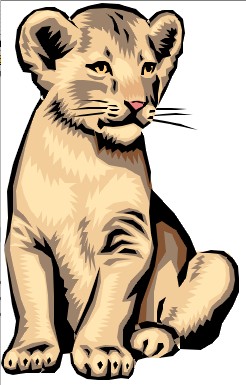
These screenshots are valid for the releases after the "huitieme (eight)" one.

The cute little SVG lion. Take 300ms to raster on my G4 400. This could be optimized, but right now i'm lazy... notice the little "bugs" in the black parts; their origin is the fill rule i used: even-odd instead of non-zero winding (both are equally time-consuming, this is just a choice for this example, not a limitation of the code).
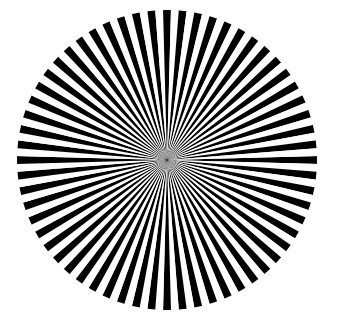
A nice moire at the center, due to the anti-aliasing method used

The postscript tiger (a modified svg version, in fact) took 1.2 s to load and raster on my G4 (with -O0 optimization level). With the quick'n'dirty subsampling antialiasing, this time goes down to 950ms (maybe less if i optimized the functions a bit, or if i put some SIMD instructions in it, but i'm lazy at the moment...)
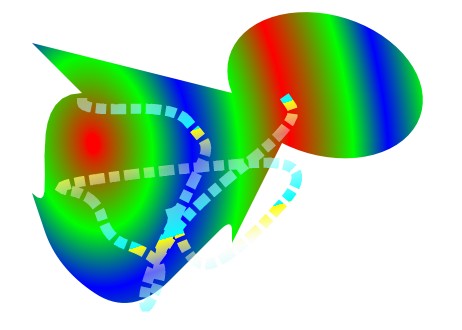
An example of the different path elements and of the gradients (who said "yuck!" ?). The Shape is made of (clockwise) a segment, an arc, a segment, a quadratic bezier with 3 control points, a cubic bezier curve and a segment. The dashed path is a random quadratic bezier. The shape is filled with a radial gradient, skewed and rotated, with 3 stops. The dashed line is filled with a linear gradient, with one of the stop being a transparent white.
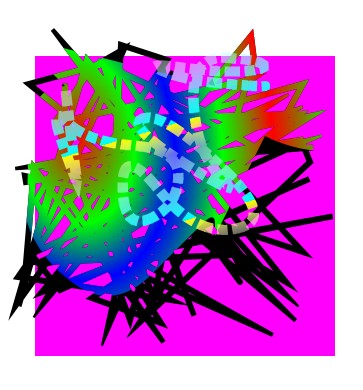
The same Yuck™ example, with some variations. The black polyline is used as clip path for the shape (render order is pink square, then black line, then RGB clipped shape, then dashed line)
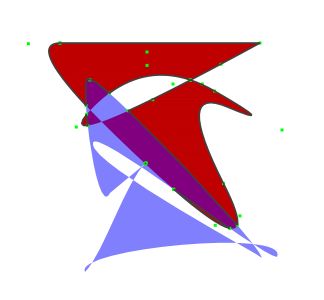
Recomposition of polygons into curves: here the blue polygon (cubic b-spline) is substracted from the red polygon (quadratic b-spline), yielding a greyed polygon, whose contours are recomposed in a path. Control points of the result curve patches are in green, the curve itself is stroked in gray.
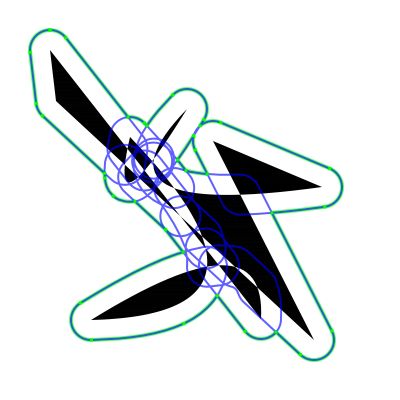
a little variation on the precedent example: make the offset of a curve (the black shape) by creating its outline (blue curve), removing the useless parts, and then recomposing the curve (green curve).